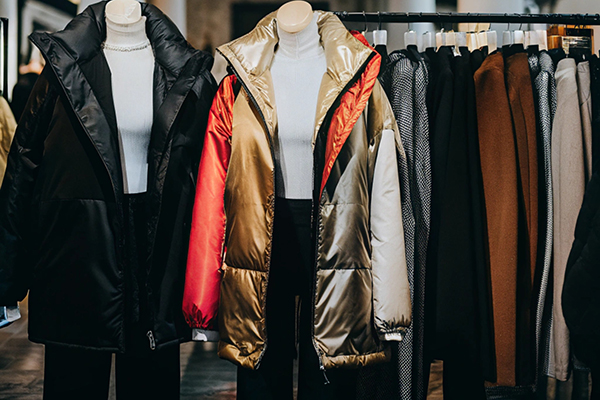Jackets and coats are two staples of outerwear, but many people use the terms interchangeably, leading to confusion. Both provide protection against the elements, but they differ in length, purpose, and style. So, what really sets them apart?
The primary difference between a jacket and a coat1 lies in their length and purpose. Jackets are shorter and designed for mild weather or fashion, while coats are longer and offer more warmth and protection.
Let’s dive deeper into how these terms are used, the history of coats, and some common questions surrounding them.
Do Americans say coat or jacket?
The usage of "coat" versus "jacket" in American English depends on the style, function, and even personal interpretation of the garment.
Americans use both "coat" and "jacket," but the choice depends on the item’s length, weight, and purpose. Generally, "jacket" refers to lighter, shorter outerwear, while "coat" is used for longer, heavier options.

Common Usage in the U.S.
-
Coat
- Refers to garments that extend below the waist and provide substantial warmth.
- Examples: Trench coats, pea coats, wool overcoats.
-
Jacket
- Used for shorter outerwear that typically ends at the waist or hips.
- Examples: Denim jackets, leather jackets, bomber jackets.
Regional Differences
- In colder states like Minnesota or Alaska, people may commonly refer to their winter wear as "coats" since warmth is a priority.
- In milder climates like California, "jacket" is more frequently used, even for items that might technically qualify as coats.
| Term | Common Characteristics | Examples |
|---|---|---|
| Coat | Long, heavy, provides insulation | Overcoat, trench coat, parka |
| Jacket | Short, lightweight, versatile | Bomber jacket, windbreaker |
In the U.S., the distinction between "coat" and "jacket" often comes down to context and local weather conditions.
Is a puffer a coat or jacket?
Puffer-style outerwear, known for its quilted design and insulation, blurs the lines between a coat and a jacket.
A puffer jacket2 can be either a coat or a jacket, depending on its length and thickness. Short, lightweight puffers are jackets, while long, heavily insulated puffers are coats.

Key Factors That Decide
-
Length
- Puffer Jackets: End at the hips or waist and are designed for moderate cold.
- Puffer Coats: Extend to the thighs or knees, offering full-body protection against severe weather.
-
Insulation
- Both puffers use down or synthetic fill, but coats often have thicker insulation for extreme conditions.
-
Purpose
- Puffer jackets are ideal for casual outings or layering, while puffer coats are designed for outdoor activities like hiking in winter or commuting in snow.
| Puffer Type | Length | Weather Suitability |
|---|---|---|
| Puffer Jacket | Waist/hip-length | Moderate cold, urban wear |
| Puffer Coat | Thigh/knee-length | Harsh winter, snow or wind |
Practical Examples
- Puffer Jacket: A casual, lightweight quilted jacket you might wear in autumn.
- Puffer Coat: A long, heavy parka suitable for sub-zero temperatures.
The versatility of puffers allows them to fit into both categories, but their classification largely depends on length and insulation.
What is the old name for coat?
The coat, as we know it today, has evolved over centuries, and its predecessors were known by different names depending on the era and style.
The old name for a coat is a "cloak3," though specific historical garments like "surcoats4" or "greatcoats5" also served similar purposes.

Historical Outerwear
-
- A loose-fitting, sleeveless garment that drapes over the shoulders and back.
- Popular in medieval Europe, cloaks were designed for protection against rain and cold.
-
- A sleeveless garment worn over armor in the Middle Ages, often used for identification or heraldic purposes.
- The surcoat evolved into more practical outerwear in later centuries.
-
- A long, heavy coat worn in the 18th and 19th centuries for warmth. Often made from wool, greatcoats were common among military personnel.
-
Mantle
- Similar to a cloak, mantles were full-length garments worn over dresses or robes for ceremonial purposes.
| Old Name | Description | Era |
|---|---|---|
| Cloak | Loose-fitting, sleeveless outerwear | Medieval to Renaissance |
| Surcoat | Worn over armor, later adapted for fashion | Middle Ages |
| Greatcoat | Heavy, long coat for warmth | 18th–19th century |
| Mantle | Ceremonial or religious overgarment | Ancient to early modern |
Modern Evolution
Over time, coats became more fitted and specialized, leading to the wide variety of styles we see today, from trench coats to parkas. The old names, while less common, reflect the coat’s long history as a functional and symbolic garment.
Conclusion
The difference between a jacket and a coat comes down to length, function, and context. Americans use both terms, but they typically call heavier, longer outerwear "coats" and lighter, shorter items "jackets." Puffer outerwear can fit into either category, depending on its length and insulation level. Historically, coats evolved from garments like cloaks3, surcoats4, and greatcoats5, which were designed for protection and warmth. Whether you’re choosing a jacket for style or a coat for warmth, understanding these distinctions can help you pick the right outerwear for any occasion.













